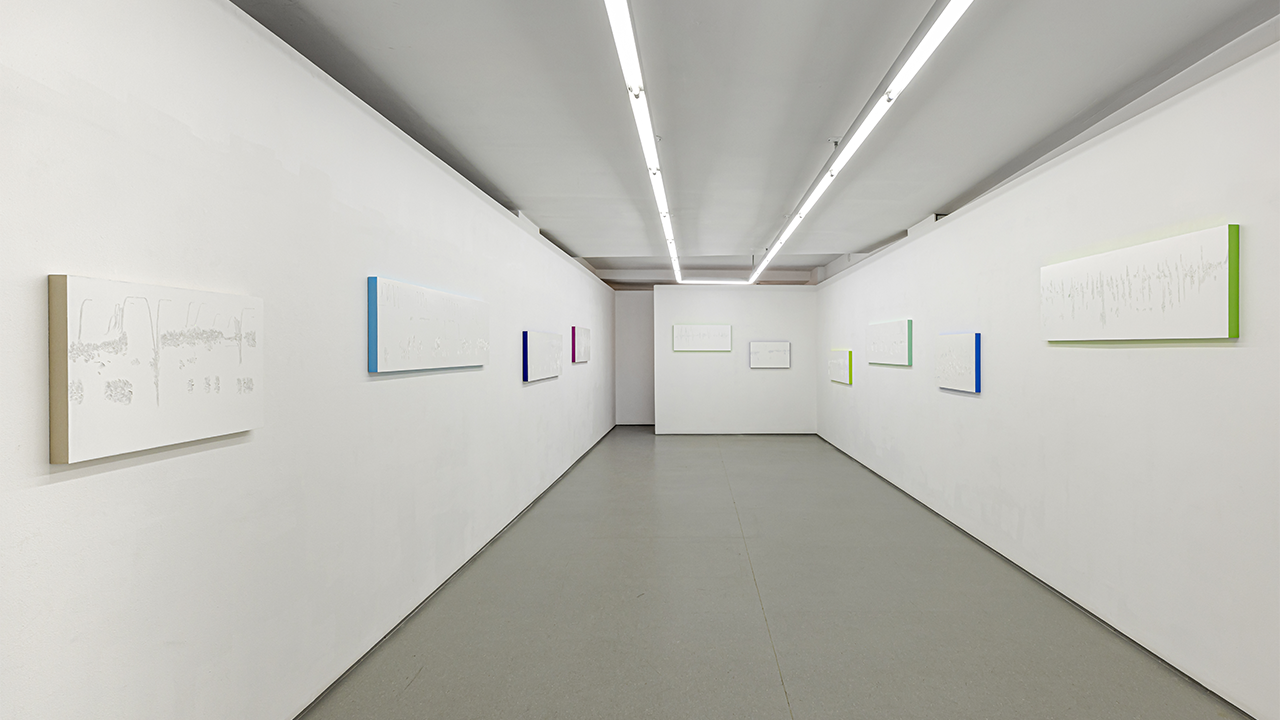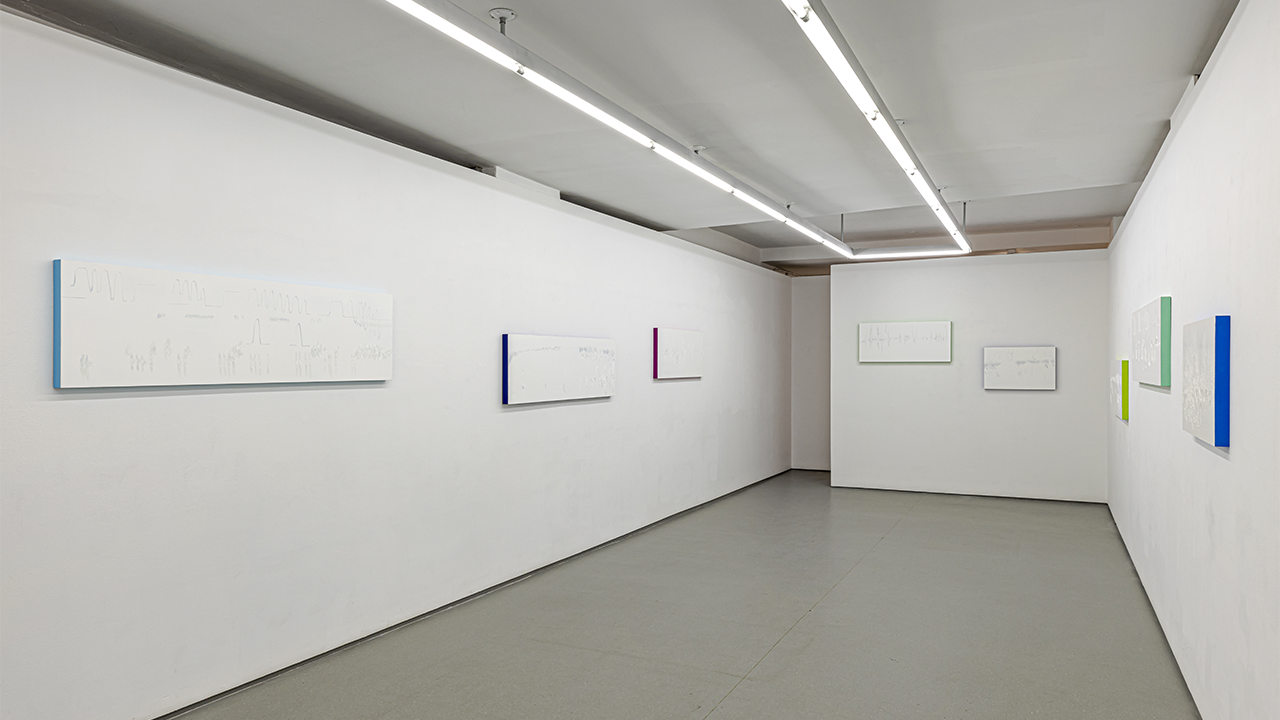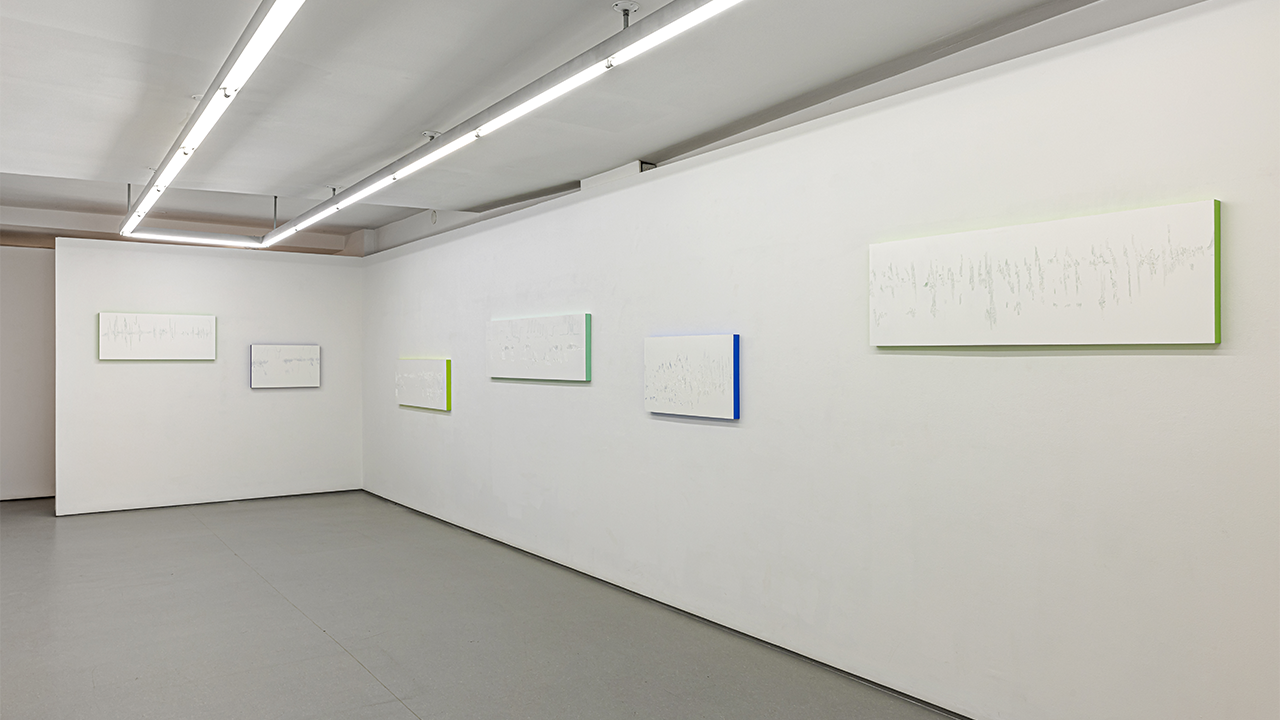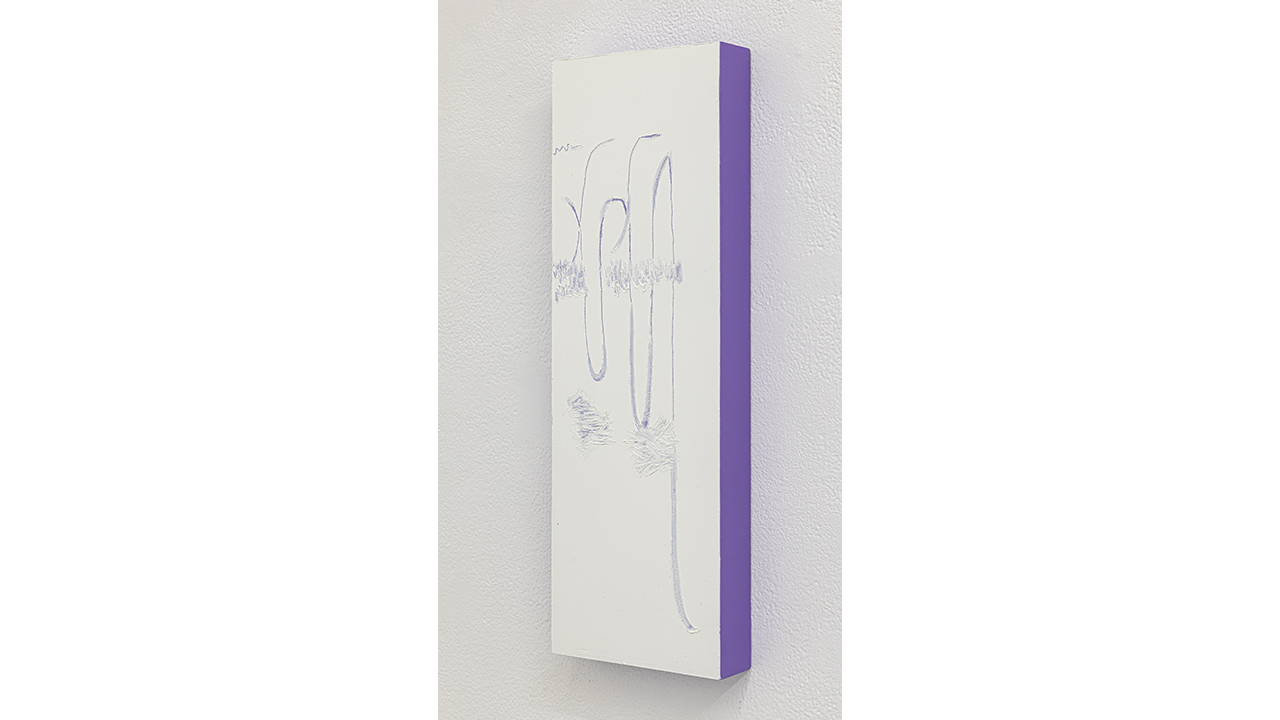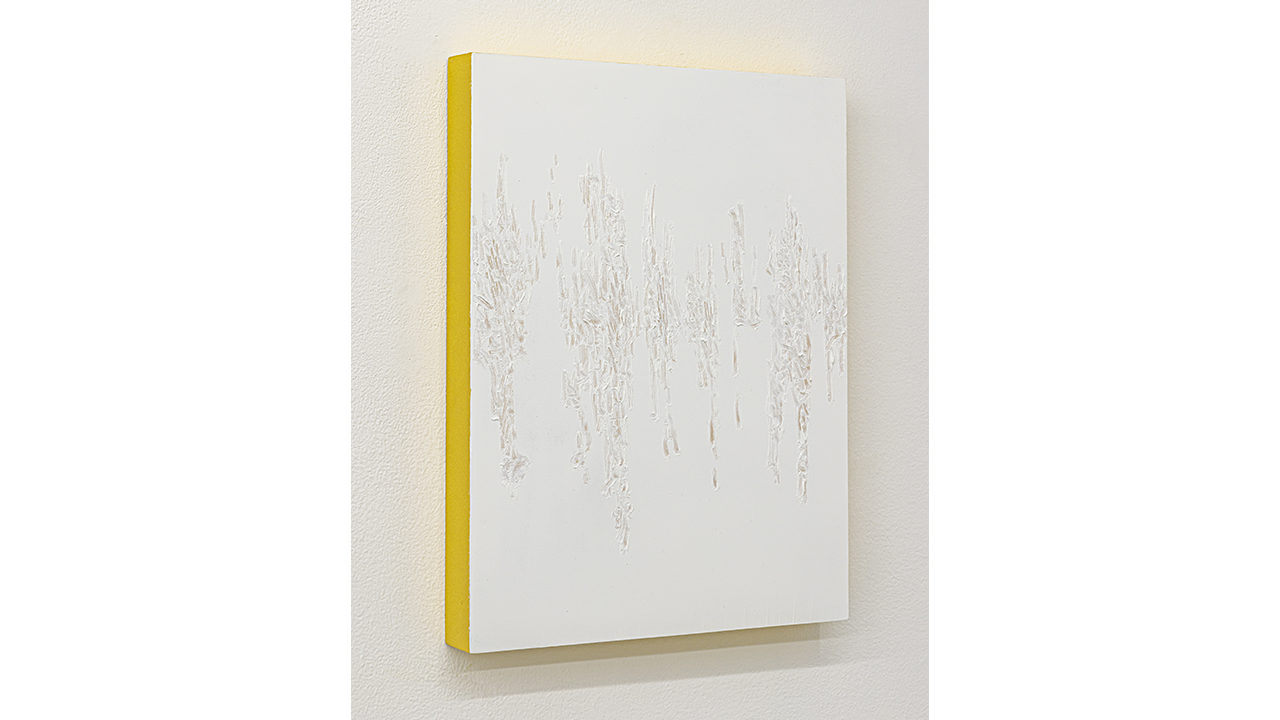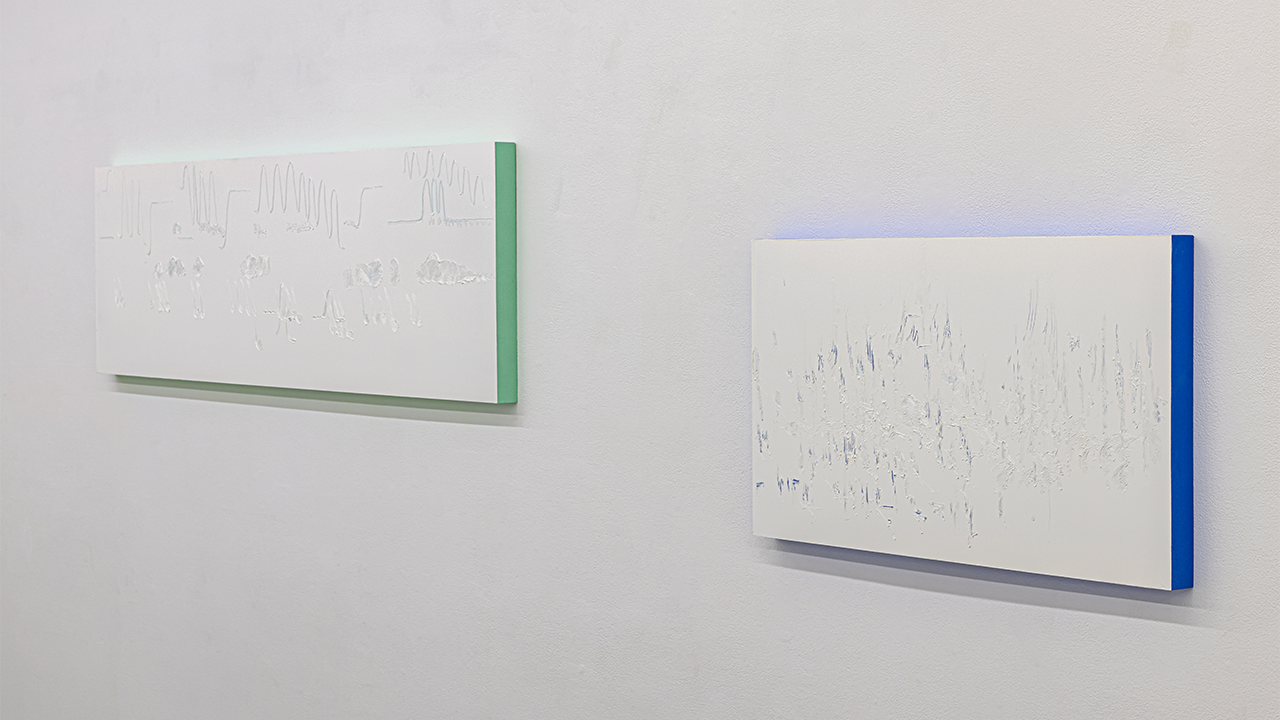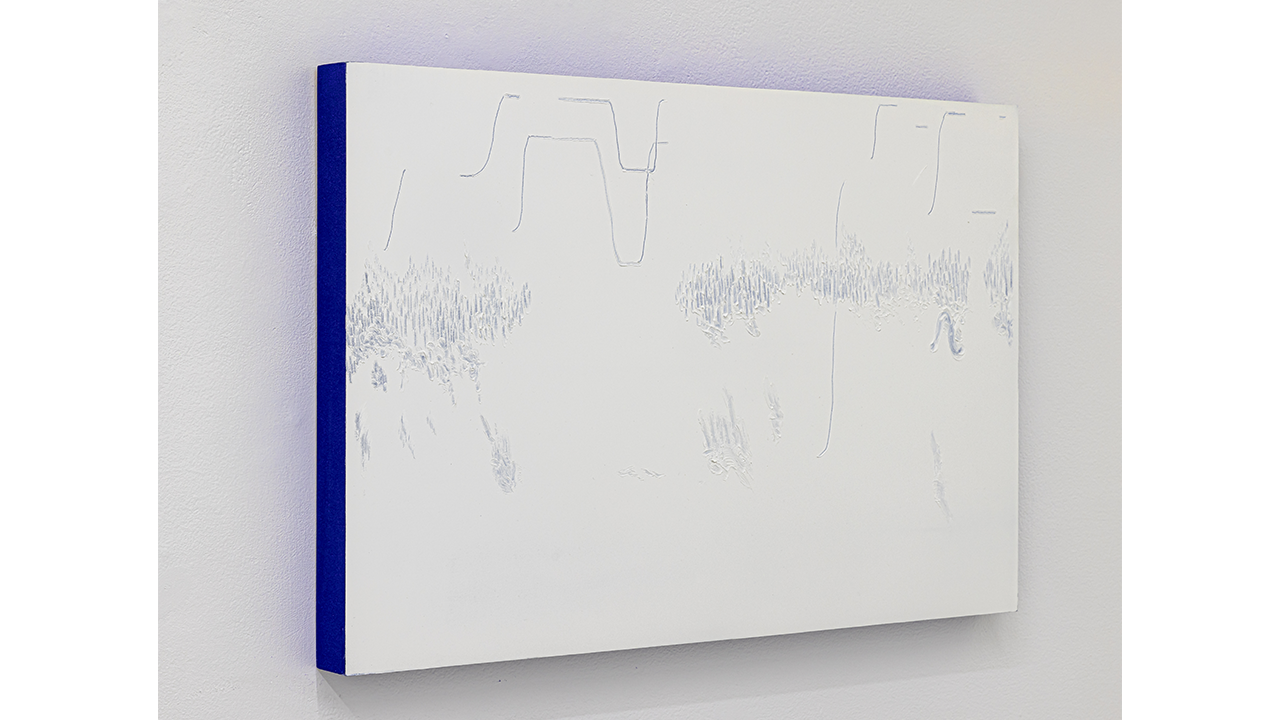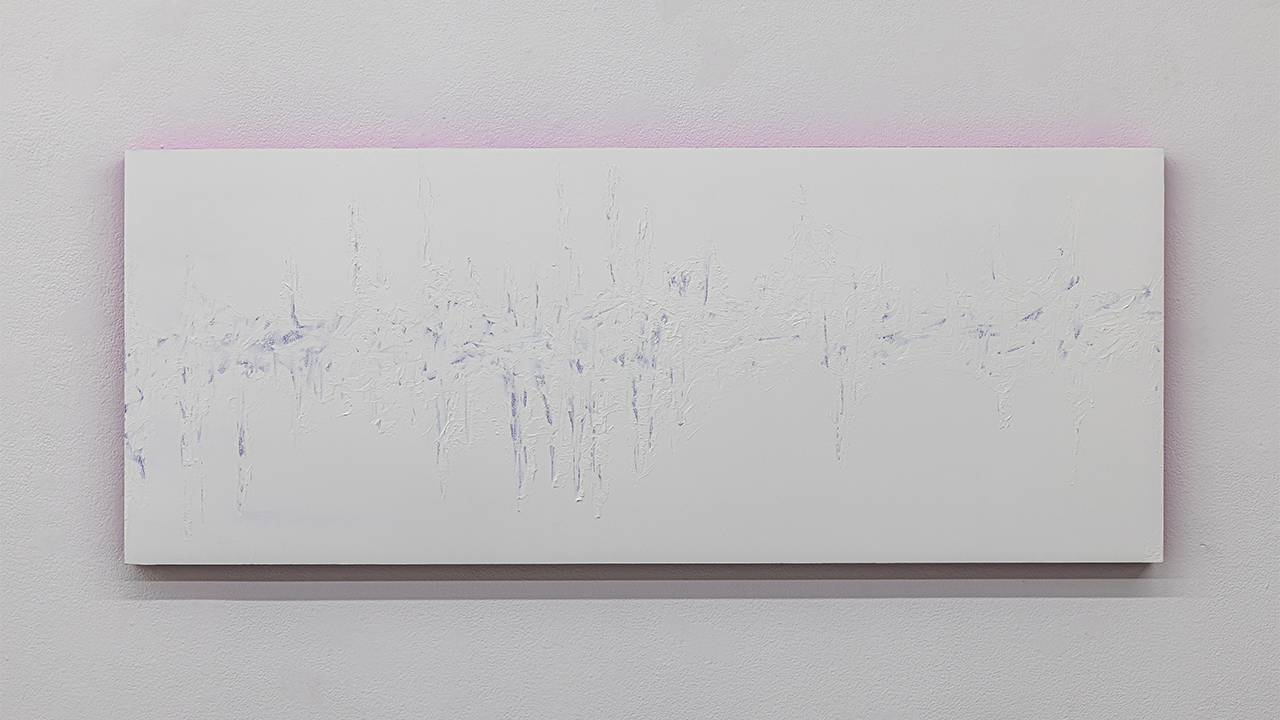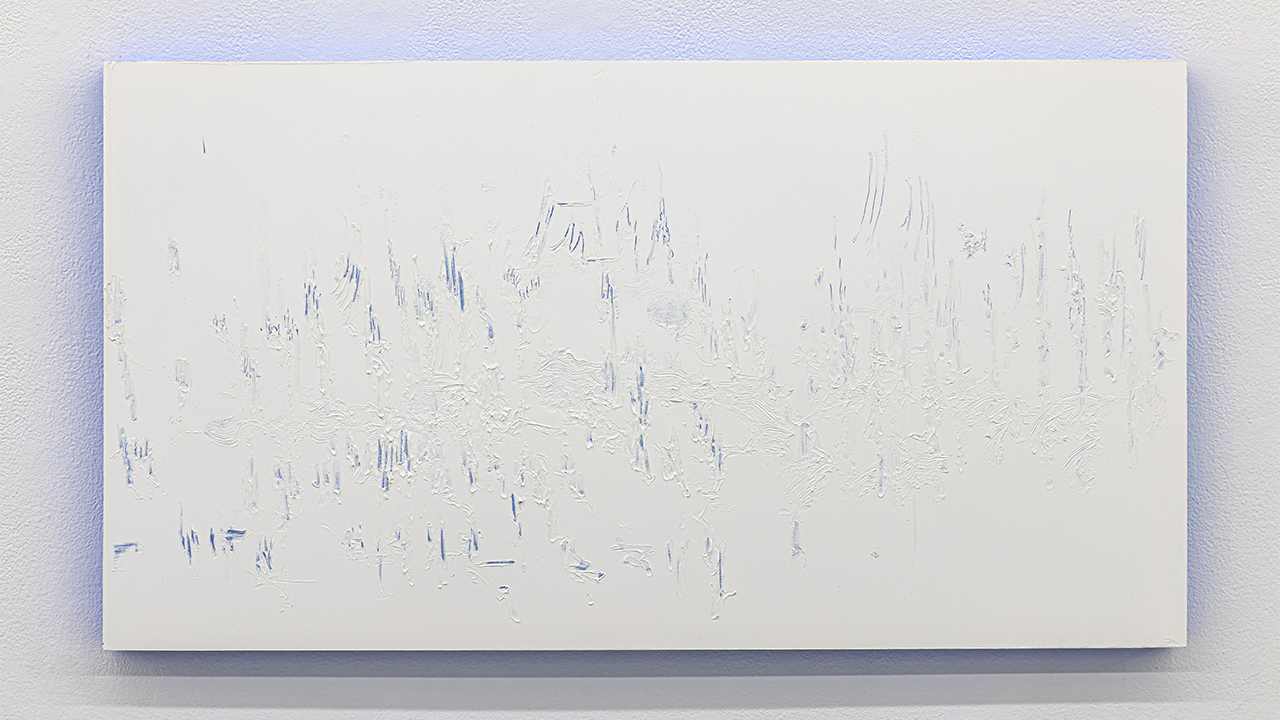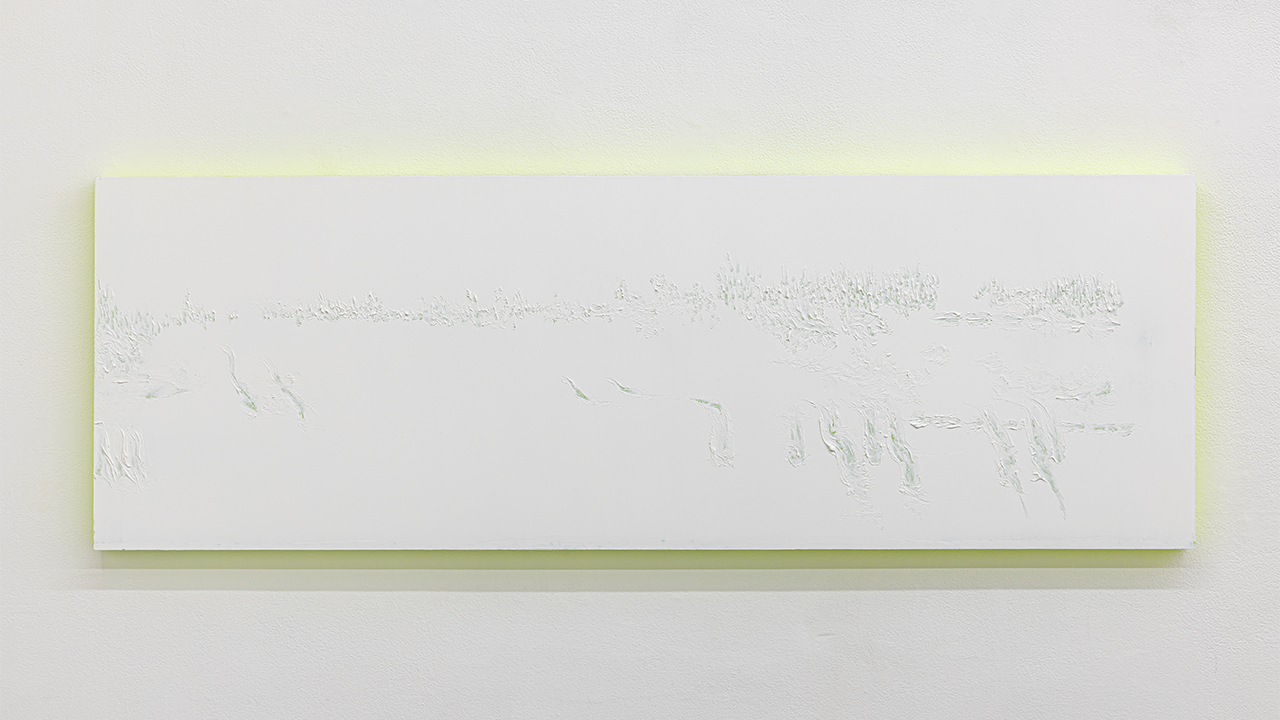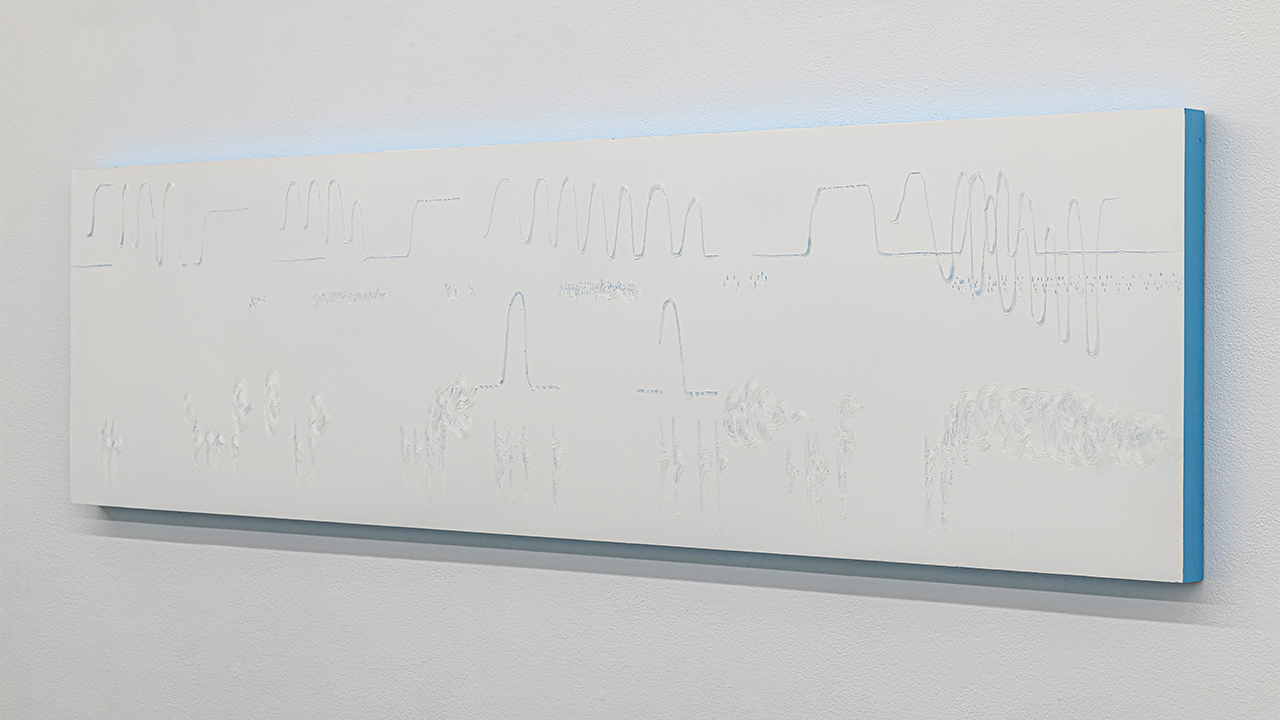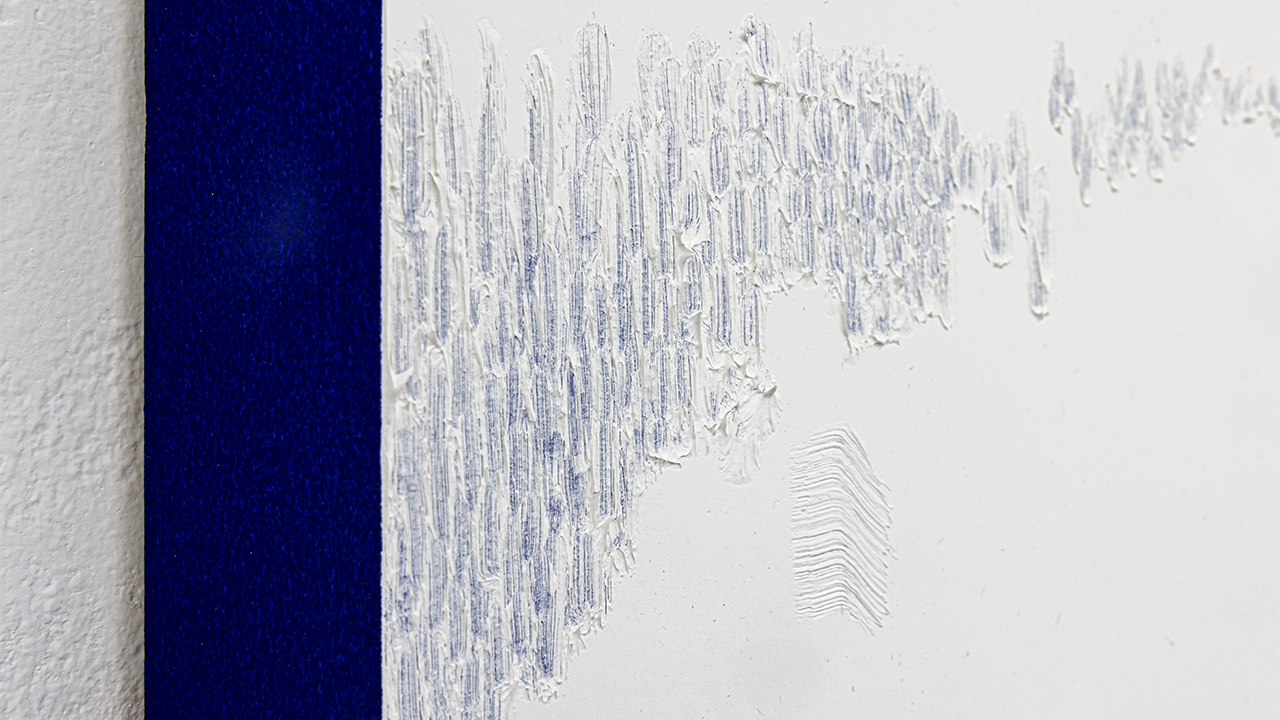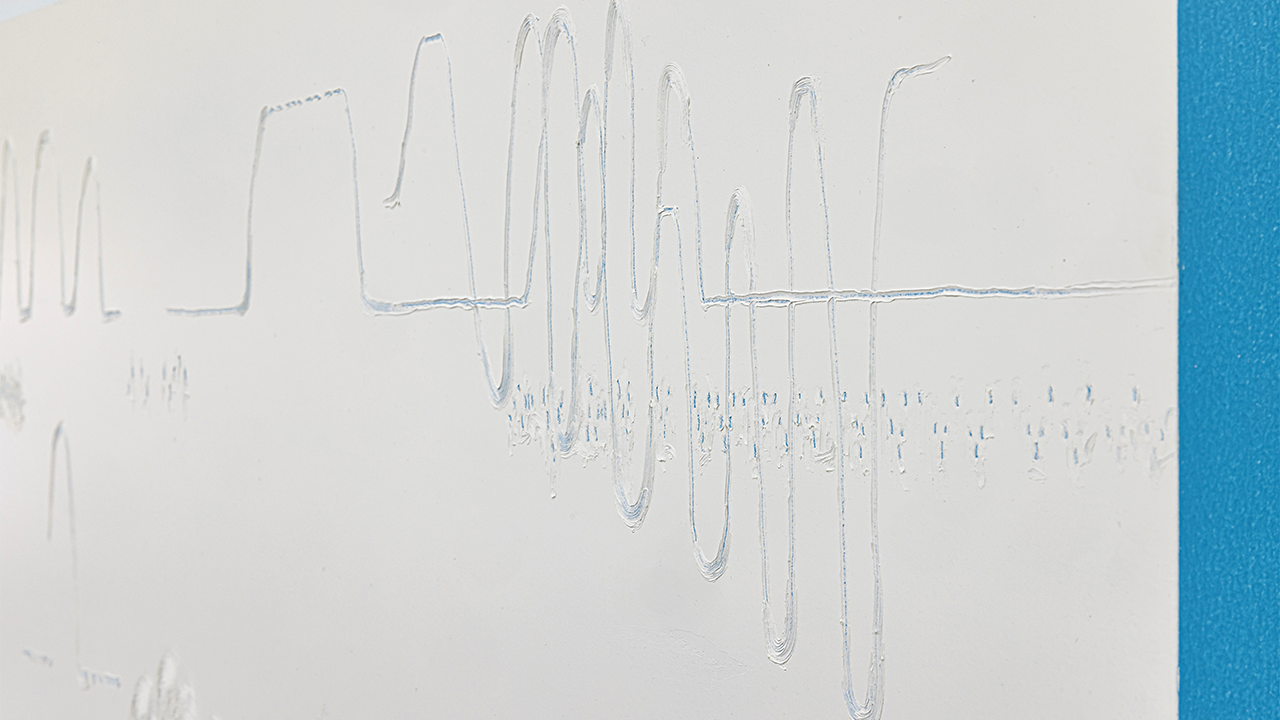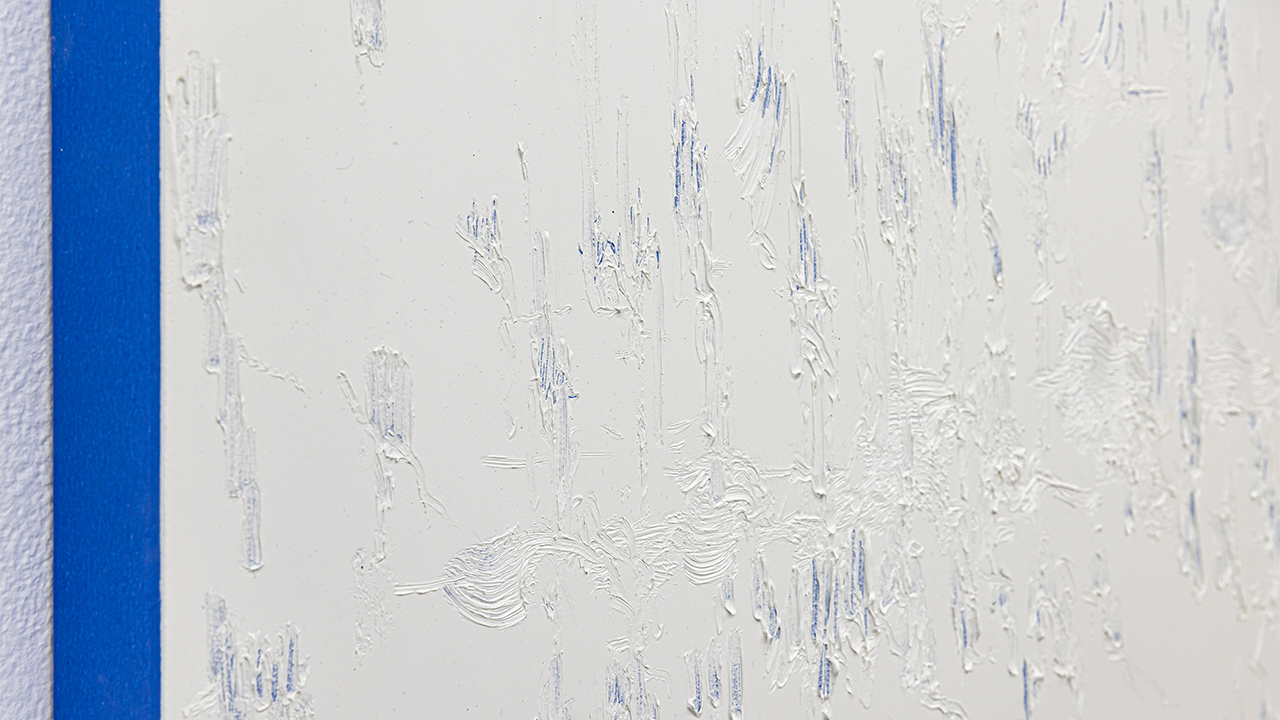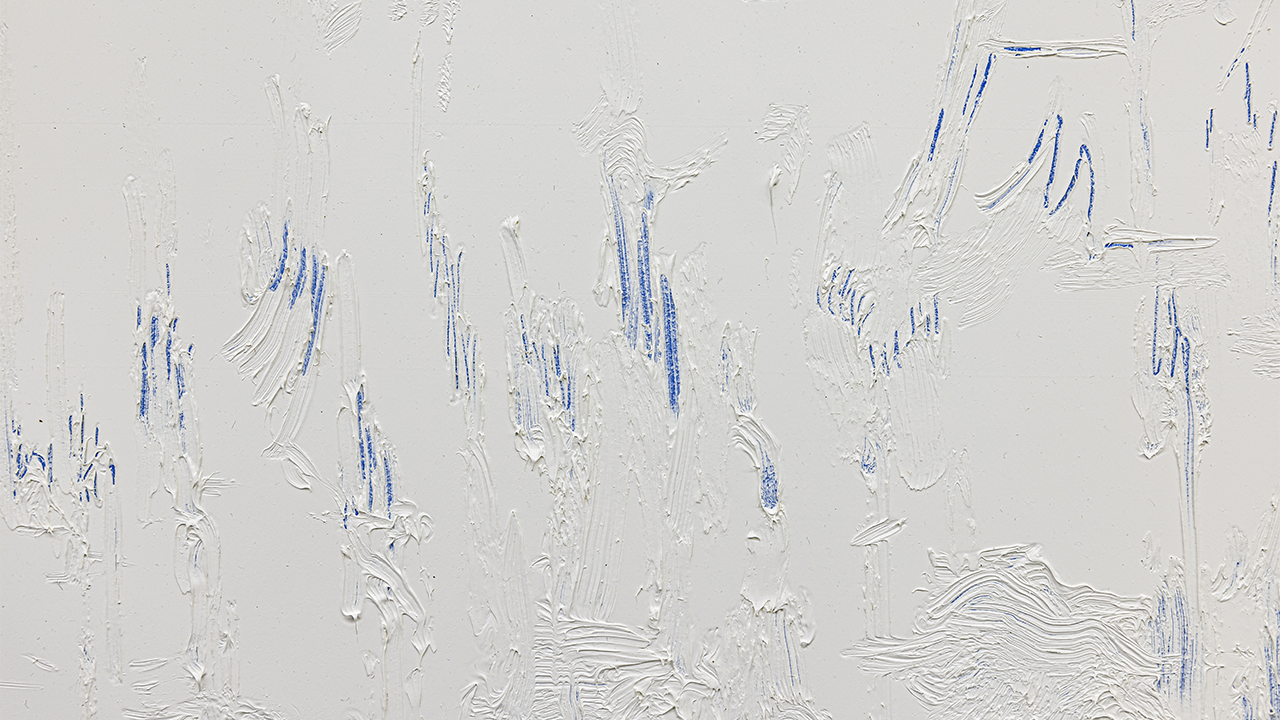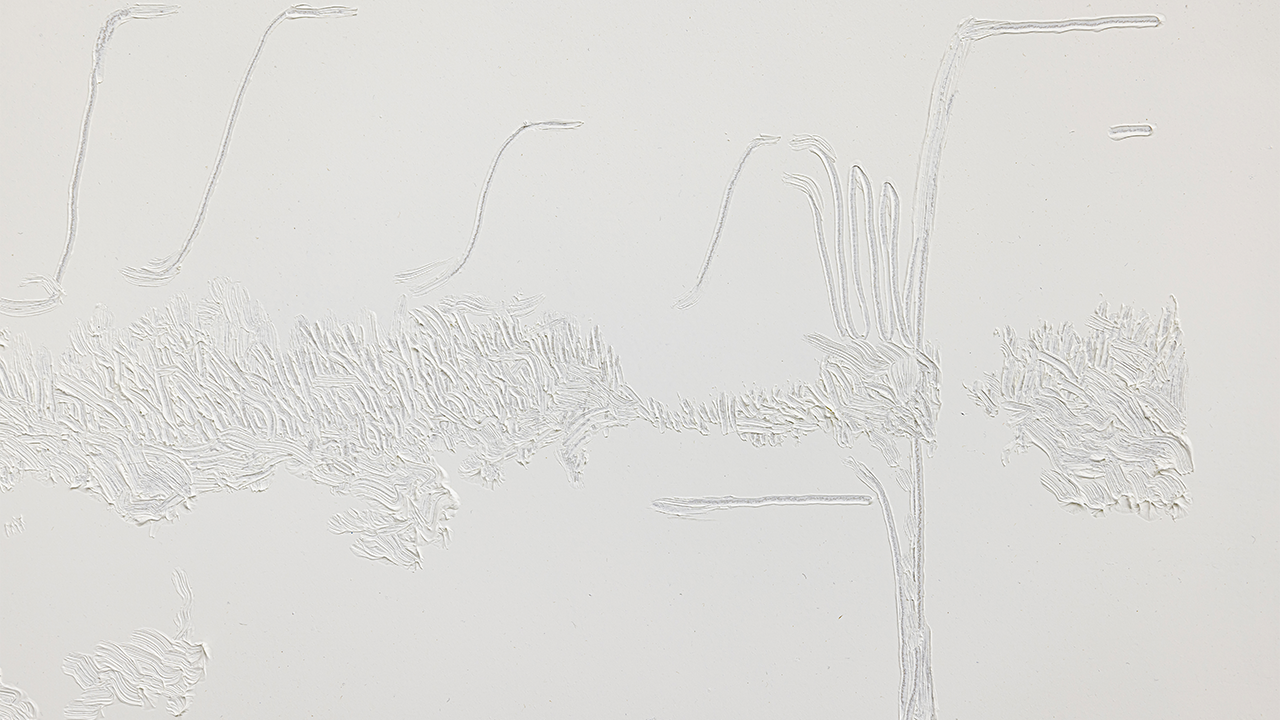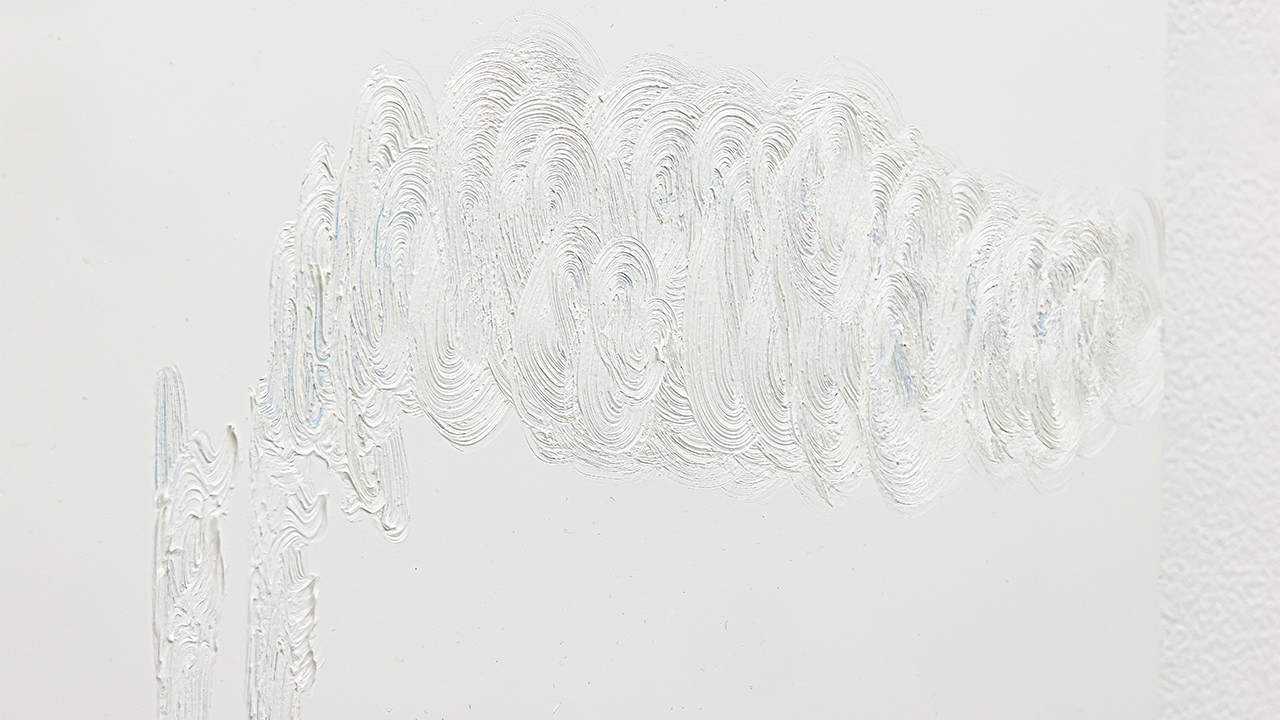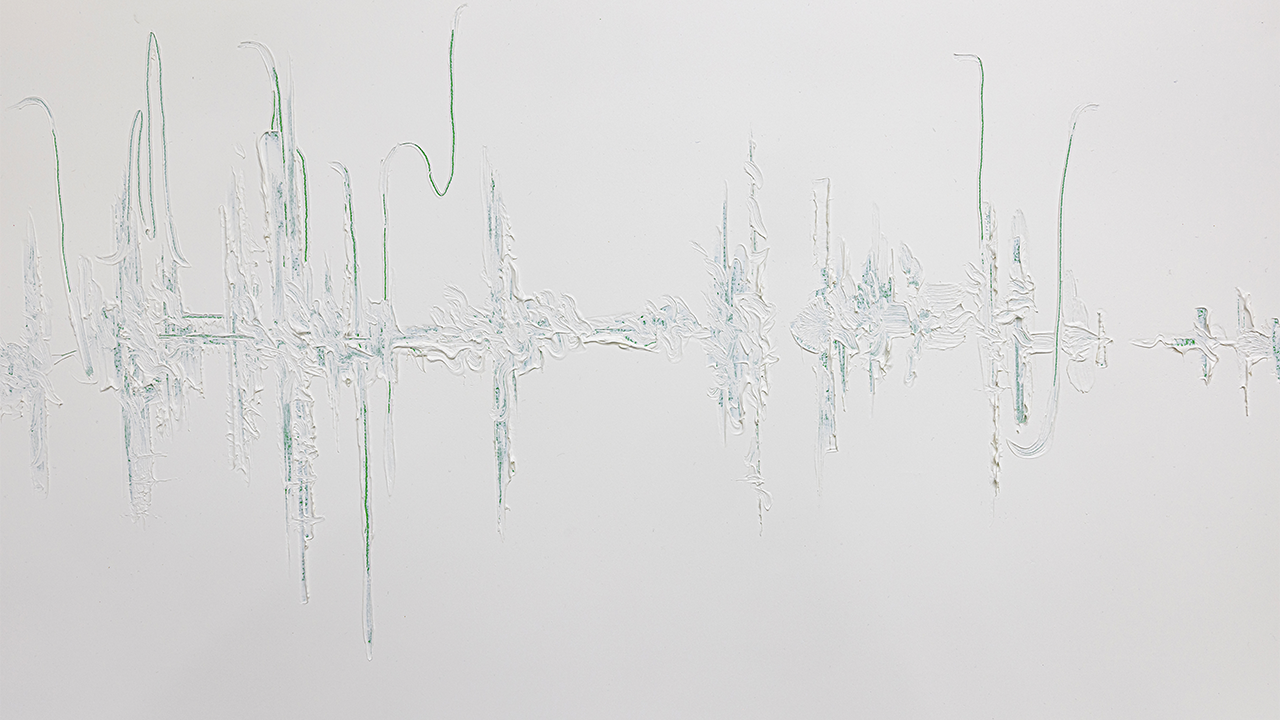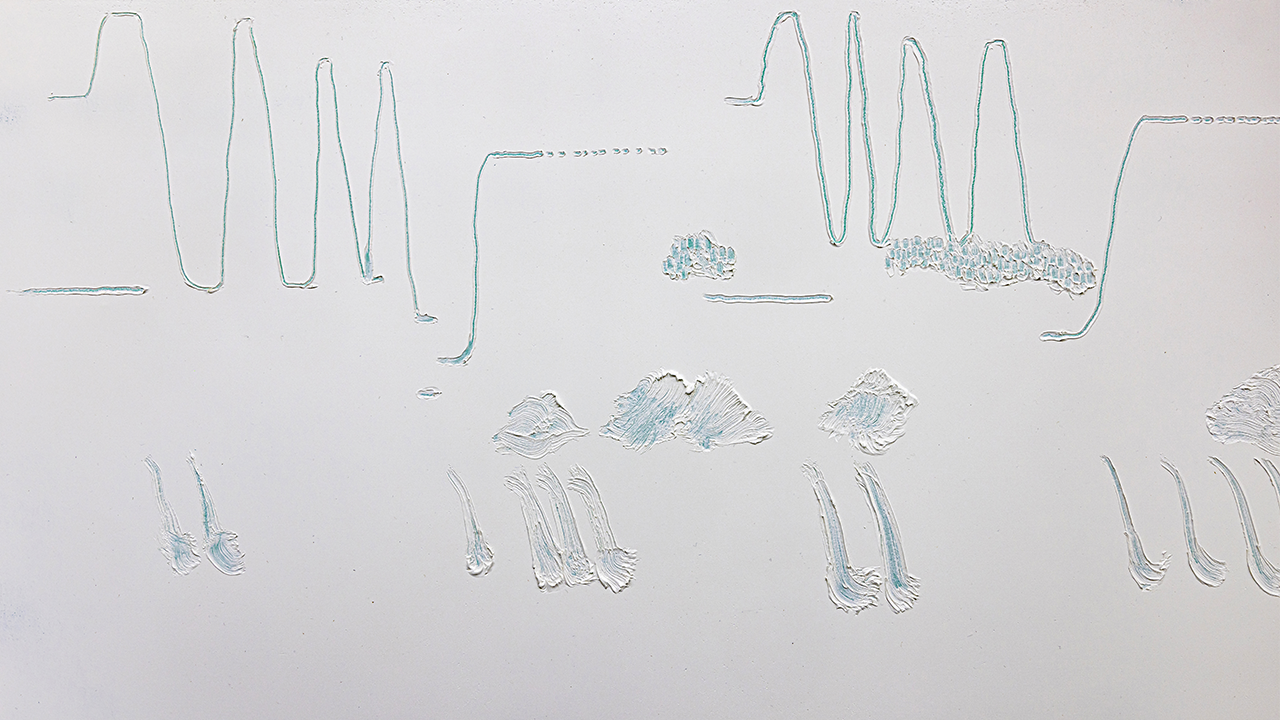Imaginary Landscape Paintings
Imaginary Landscape Paintings: are a series of painted interpretations of American composer John Cage’s Imaginary Landscape compositions. Cage made five compositions with this title between 1939 and 1952. Imaginary Landscape No.1 is widely considered the first composition to use turntables, No. 2 and 3 are for percussion ensembles, whilst No. 4 is for radios, and No. 5 is an instruction for a magnetic tape collage of other music. Since the 1950s there have been numerous recordings of these works all varying in length and timbre. Given the indeterminant nature of 4 and 5—there is even greater variety in these recordings. In 2012, Paul Walde began to collect every version of these works he could find—these include YouTube posts of excerpts of professional recordings, student performances, as well as amateur renditions of these works. To date he has assembled over 40 recordings of these works.
Each painting is made on a custom panel that is constructed to match the duration of the corresponding recording. All panels are 18” high and the length is determined by allotting 9” per minute. In keeping with Cage’s use of chance operations, each painting features a background colour chosen at random using randomcolour.com a colour generating website.
The paintings are created by covering each coloured panel in a thin layer of white oil paint which represents silence. Marks are created by scoring through the white layer using painting implements such as brushes and knives while listening to the corresponding recording. Frequency, amplitude, and duration of the sounds are all considered in executing the marks where they appear in the recording. The result is an impression of the landscape suggested by the realization of the composition as it appears in the recording.

